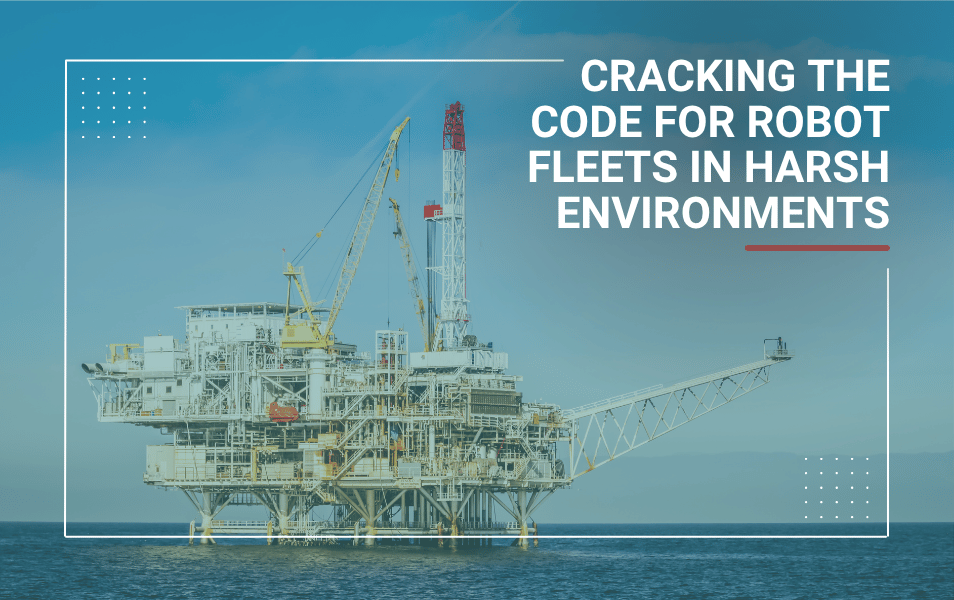Introduction
Oil and gas companies are using more robots for safety inspections, maintenance, and monitoring. These robots save time and keep people out of danger. But there’s a problem: every robot system speaks its own language. That makes it hard to manage them all in one place.
Companies want to use robots from different vendors, both on the ground and in the air. But the fleet management systems (FMS) that control these robots don’t work well together. Each vendor has its own protocols and interfaces.
To make robots truly useful in the field, we need a common way to control and coordinate them. That’s the challenge. And it’s bigger than it looks.
⸻
Why it’s hard
1. Too many vendors, no common language
- Each robot has its own tech stack, interface, and way of communicating.
- Mixing brands in one system often causes delays, bugs, or downtime.
- There’s no plug-and-play model… Yet.
2. Environments are extreme and vary widely
- Robots must work in places that are wet, explosive, or remote.
- Onshore plants differ hugely from offshore platforms.
- A single standard must handle all these use cases.
3. Existing standards don’t fit
- VDA5050 and MassRobotics standards are made for factories and warehouses.
- They don’t cover:
- Mixed use of drones and ground robots.
- Harsh, outdoor, or high risk conditions.
- Cybersecurity and data integrity.
- These gaps mean oil and gas firms can’t rely on current standards.
4. Safety and compliance are non-negotiable
- New standards must follow strict rules:
- FAA Part 107 for drones.
- ISO safety norms for ground robots.
- Regulations differ by country and change often.
- A fleet system must handle all of that without crashing.
The industry isn’t aligned
- Robot vendors, software developers, and oil firms each have their own goals.
- Many startups are young and lack field experience.
- Building trust and agreement takes time.
⸻
What a better system needs
To actually work in the field, a new fleet standard must:
Translate between brands Like a universal adapter between systems.
Handle drones and ground bots together Most current setups can’t.
Support real-time collision avoidance Not just between robots, but also with infrastructure and humans.
Be secure Oil and gas can’t afford hacks or data leaks.
Work across sites and weather types Whether it’s hot, cold, wet, or confined space.
⸻
Learning from other sectors
Other industries face similar issues:
- Last-mile delivery robots deal with safety, trust, and public rules.
- Mining has tested automated drones in harsh, remote settings.
- Lessons from these areas can help oil and gas avoid costly mistakes.
⸻
Why it matters now
Without a shared standard, every new robot adds friction:
- More vendor lock-in.
- More integration cost.
- More training and safety risk.
A universal system would:
- Reduce downtime.
- Cut integration costs.
- Make it easier to test and scale up.
- Help smaller operators adopt robotics.
⸻
My final thoughts on this post
This isn’t just a tech problem. It’s a coordination problem. And in oil and gas, there’s no room for error.
If the industry can agree on how robots talk to each other, it’ll move faster, stay safer, and spend less.
If this post struck a chord, let’s connect . I’d love to hear how you’re dealing with similar challenges—or what’s worked for you.
